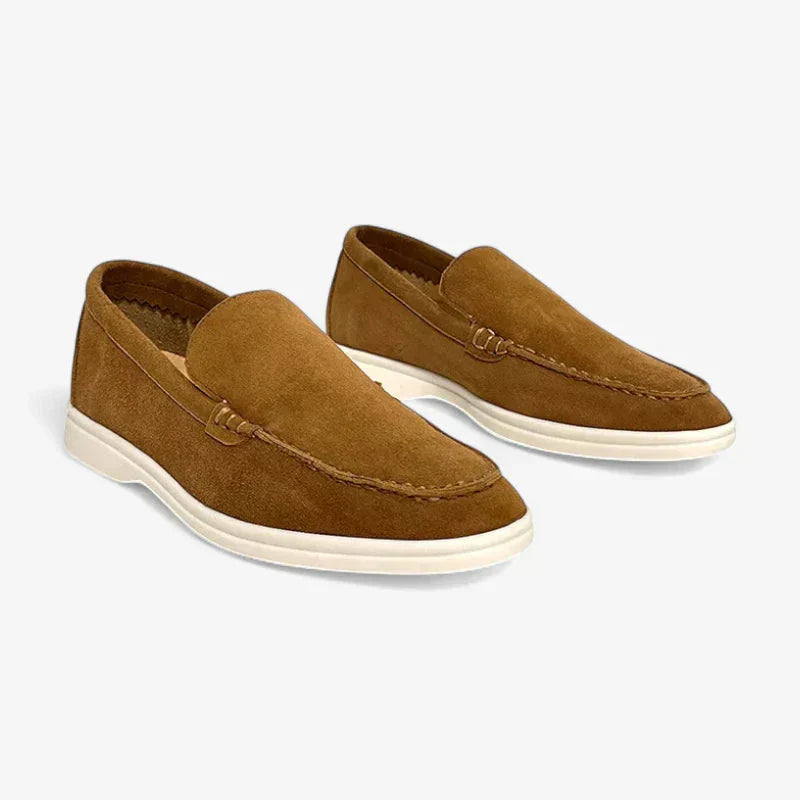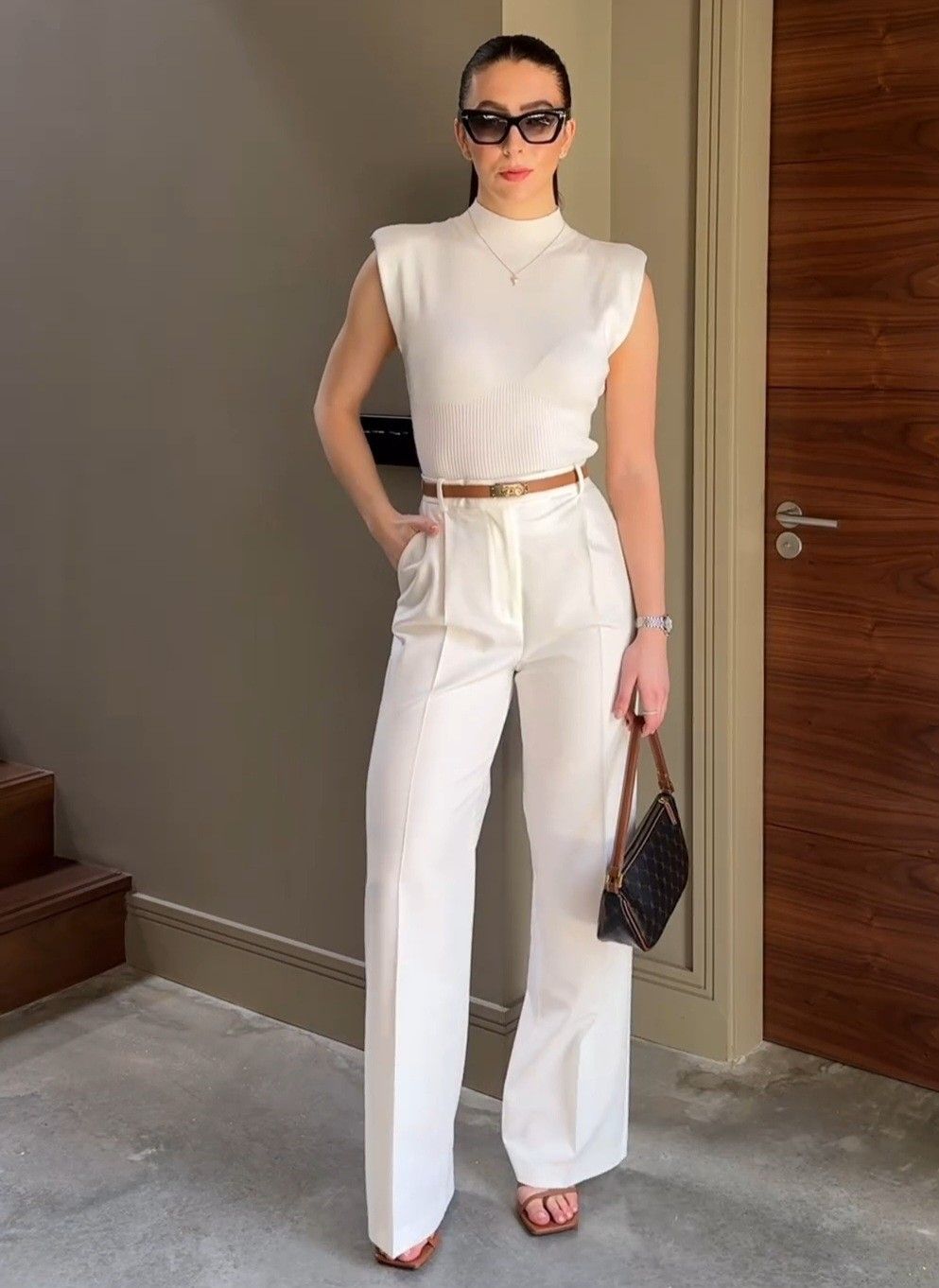
Classic Footwear Selections for the Old Money Style
Shoes can make or break the old money style. You can wear a perfect blazer and pressed trousers, but if your footwear is noisy, plastic-looking, or trendy for trend’s sake, the spell breaks. Old money men and old money women choose pairs that are quiet, rebuildable, and right for the setting.
They rotate them, polish them, and repair them long before replacement is needed. This guide shows you which silhouettes belong in an old-money wardrobe, how to pair them, what colors to buy first, and how to care for them so they age with grace.
The old money style rulebook for shoes (short version)
-
Choose classic shapes. Loafers, Oxfords, Derbies, brogues, Chelsea and lace-up boots, driving mocks, and minimal tennis sneakers.
-
Buy full-grain leather or quality suede. Plastic shine is out; depth and patina are in.
-
Favor resolvable construction. Goodyear-welted or Blake-stitched pairs live for years with new soles.
-
Keep colors simple. Dark brown, mid-brown, and black first; tobacco suede next; then burgundy for character.
-
Maintain a rotation. Never wear the same pair two days in a row. Shoe trees are not optional.
-
Let the shoe match the formality of the outfit. Subtle, not showy.
When you follow these basics, the rest falls into place. The result is the poised, quiet look people now call the old money style.
1) Loafers: the everyday anchor
If you buy one pair first, make it loafers. Old money men lean on penny loafers for the office, dinners, and weekends. Old money women use loafers with trousers, mid-length skirts, and slim denim. Choose full-grain calf for structure or suede for softness.
What to look for
-
A rounded toe—not pointy, not squared.
-
A low, stacked heel with a quiet click.
-
A hand-sewn apron (on mock-toe styles) and clean stitch lines.
Color order
-
Dark brown (works with navy, charcoal, olive).
-
Mid-brown or espresso.
-
Black (formal offices or black-tie proximity).
-
Tobacco suede for spring and fall.
Pair a dark-brown penny loafer with a pale blue shirt and charcoal trouser for a look that whispers old money. If you need crisp, reliable shirting, browse well-cut button-downs inside the Old Money Shirts edit—you’ll see how a clean collar roll and long-staple cotton elevate even simple outfits explore examples in the our Shirts collection.
2) Oxford shoes: the formal benchmark
The Oxford is the dress shoe standard because of its closed lacing—the quarters stitch under the vamp, creating a sleek, composed line. That small detail is why Oxfords read more formally than Derbies. For black-tie or serious boardrooms, the black cap-toe Oxford is the old-money choice. For weddings in navy suits, dark brown works beautifully.
If you want to see the anatomy that sets Oxfords apart, the overview of the Oxford shoe (closed lacing, common cap toe, and dress codes) is clear and widely referenced on Wikipedia read it (here) Understanding the pattern helps you spot quality at a glance.
Best uses
-
Interviews, big meetings, funerals, black-tie with a plain whole cut in black.
-
Old money women: low heel, almond toe, minimal shine.
A navy blazer, white Oxford shirt, and charcoal flannel trouser call for either dark-brown Oxfords or loafers. For trousers that drape like old money, look for mid-weight wool cuts with a clean break; you can (explore) and also you can compare silhouettes in the Old Money Pants collection.
3) Derbies and brogues: the versatile middle
Derbies (open lacing) bridge the gap between formal and casual. In smooth calf, they handle office days and dinners. In pebble grain or country calf, they pair with tweed, cords, and field jackets. Broguing—those decorative perforations—lowers formality another notch and adds texture that suits autumn.
Buy these next
-
Plain-toe Derby in dark brown for maximum range.
-
Semi-brogue (quarter brogue) if you want a touch of pattern without going full country.
Avoid
-
Heavy platform soles, exaggerated long wings, or glossy plastic finish. Old money style is never a costume.
4) Boots: polished, practical, and weather-ready
Boots are essential for old money men and old money women in cooler months. They protect against rain and sleet while keeping the line of the outfit refined.
Chelsea boots
-
Sleek side elastic, almond toe, leather or Danite-style rubber sole.
-
Suits, tailored trousers and long coats. Tobacco suede or dark brown calf are safest.
Lace-up boots (service or dress boots)
-
Six to eight eyelets, minimal hooks, leather or studded rubber sole.
-
Pebble grain or waxed calf for durability; pair with flannel, cords, or heavy denim.
Care tips
-
Rotate soles for a full day of dry time.
-
Use a boot jack or loosen fully—don’t crush the heel counter.
5) Driving mocks and boat shoes: leisure with limits
These are off-duty classics in old-money circles, but treat them as leisure shoes, not office wear. Driving mocks have nubby rubber pods for pedal feel; boat shoes use sipped rubber for deck grip. Both look right with chinos, linen, and polos.
Rules
-
Keep colors classic: mid-brown, navy, or snuff suede.
-
Avoid thick white contrast stitching or loud brand tags.
-
Never wear a sharp suit—old money style respects context.
6) Minimal sneakers: the only acceptable “sport” look
Old money men and old money women wear sneakers—just not loud ones. Think clean court silhouettes in leather or premium canvas: tonal stitching, no giant logos, and a low profile.
How to style
-
With stone chinos, knit polo, and a navy cardigan for travel.
-
With dark denim and a camel coat on weekends.
What to avoid
-
Chunky, neon, hyper-branded styles. They fight over outfits and date fast.
7) Materials: why full-grain leather and suede matter
Old money footwear stands out because the materials improve with age. Full-grain leather retains the strongest fibers, develops a deep patina, and resists cracking when cared for. Top-grain is thinner and more uniform; corrected grain has an artificial finish that can look plasticky. Quality suede (split with tight nap) wears in, not out, especially in snuff or tobacco tones.
Lining and insoles
-
Leather linings breathe and mold to the foot.
-
Cork or leather insoles compress to your footprint, increasing comfort over time.
Outsoles
-
Leather soles: dressy and quiet, best for carpeted interiors or dry days.
-
Studded or Dainite-style rubber: discreet grip for wet sidewalks.
-
Lug soles: for country wear; use with tweed and heavier fabrics.
8) Construction: resoling is non-negotiable
If you want a shoe to be an asset, it must be resolvable. That’s why old money men and old money women prefer Goodyear-welted or Blake-stitched pairs. The welt or stitched channel allows a cobbler to remove worn soles and attach new ones, preserving the upper you’ve broken in.
If the term “Goodyear welt” is new to you, a short overview will help. The method adds a welt strip sewn to the upper and insole rib, creating a durable platform for repeated soles—a simple explanation you’ll find on Wikipedia’s Goodyear welt page (https://en.wikipedia.org/wiki/Goodyear_welt). Once you understand that, labels like “cemented” (glued) will make you think twice.
9) Color strategy: build a wardrobe, not a pile
Start here
-
Dark brown calf loafers
-
Black cap-toe Oxfords (for formal needs)
-
Mid-brown Derby or Chelsea boot
-
Tobacco suede loafer (spring to fall)
-
Minimal white or ecru leather sneaker
Add later
-
Burgundy (oxblood) loafers for depth with navy or grey
-
Pebble-grain boots for bad weather
-
Chocolate suede Derby for relaxed tailoring
Pairing logic
-
Brown shoes with navy, grey, olive, and cream.
-
Black shoes with charcoal and black, or when the event is formal.
-
Suede with textured fabrics (flannel, corduroy, tweed). Smooth calf with worsted wool.
For a visual of how shoe color lines the whole outfit, skim refined trouser shapes in the Old Money Pants collection and picture each hem “kissing” a dark-brown loafer or black Oxford. The harmony is instant.
10) Care and rotation: the habit that creates patina
Daily
-
Brush dust and grit with a horsehair brush.
-
Insert cedar shoe trees to pull moisture and keep shape.
Weekly
-
Wipe with a damp cloth; use a suede brush or eraser for nap.
-
Check laces—frayed laces drag the look down.
Monthly/Quarterly
-
Conditioning cream for calf; spray protector for suede.
-
Edge dressing on sole edges for a crisp line.
Seasonal
-
Swap leather soles to rubber (or add thin toppies) before winter rain.
-
Book resoles before you wear a hole; the upper will last longer.
Patina is not neglect; it’s the glow that appears when leather is clean and fed. Old money style values that glow.
11) Fit and comfort: quiet confidence starts at the heel
A beautiful shoe that slips at the heel or crushes your toes is not an old-money shoe—it’s a costume. Fit should be snug at the heel, firm at the midfoot, and roomy at the toes. Try on in the afternoon when feet are at their largest. If you’re between sizes, consider width options rather than sizing up.
Break-in plan
-
Two hours at home the first day, then a rest day.
-
Thin socks with Oxfords, ribbed dress socks with loafers to help the grip early on.
-
Use a tongue pad (removable) if the instep is low and you slip.
12) How old money women adapt the rules
Old money women can swap loafers for low block-heel pumps or almond-toe flats in the same colors and materials. A low heel in dark brown or black calf is the formal anchor; a suede flat in tobacco or navy handles long days with skirts or trousers. Driving mocs and sleek Chelsea boots cover weekends and travel. The same care routine applies.
13) How to shop (and not get burned)
-
Feel the leather. Full-grain has depth and fine pores; corrected grain looks like a plastic shell.
-
Bend the shoe. It should flex near the ball, not in the arch.
-
Read the outsole. Welted or stitched? If it just says “cemented,” expect a shorter life.
-
Ignore logo size. Old money style favors craft over branding.
-
Try with real socks. Match the sock thickness you’ll wear most.
If you want a head start on silhouettes and finishes that fit the brief, the curated Old Money Shoes(view) section lays out tried-and-true shapes that pair cleanly with classic tailoring .
14) Build your rotation in three moves
-
Daily driver: dark-brown penny loafer (or almond-toe flat).
-
Formal anchor: black cap-toe Oxford (or low block-heel pump).
-
Weather pair: chocolate Chelsea or lace-up boot with discreet rubber sole.
From there, add tobacco suede loafers, a mid-brown Derby, and a minimal leather sneaker. That six-pair setup covers the year for most old money men and old money women.



